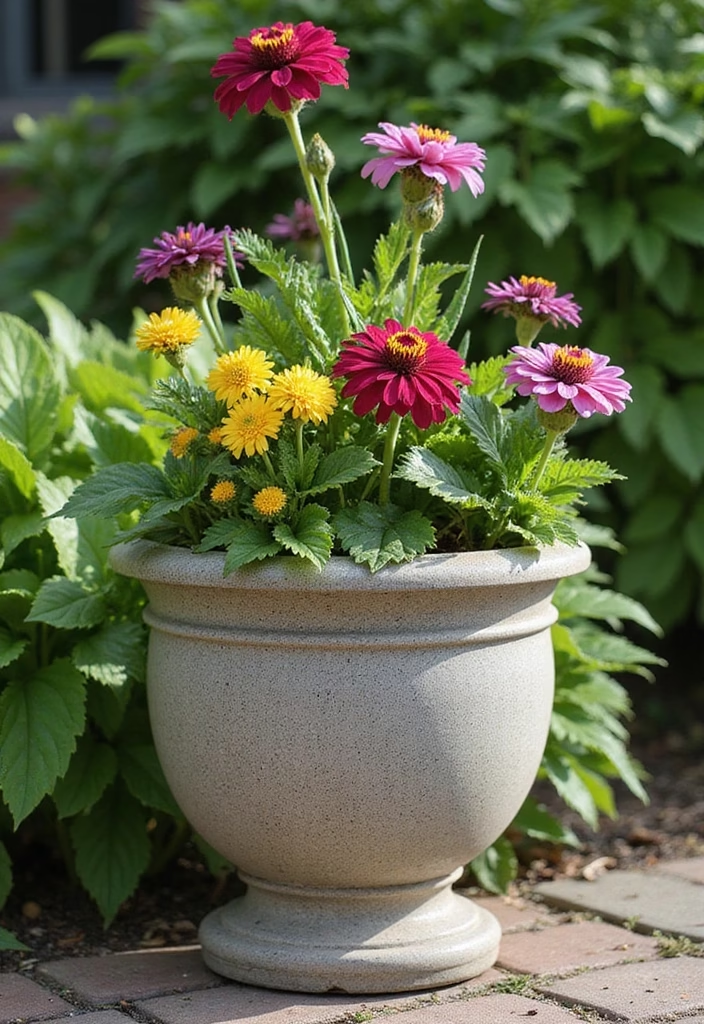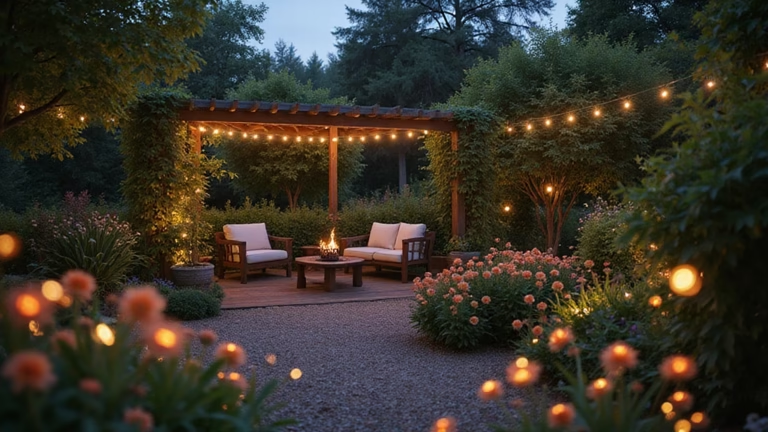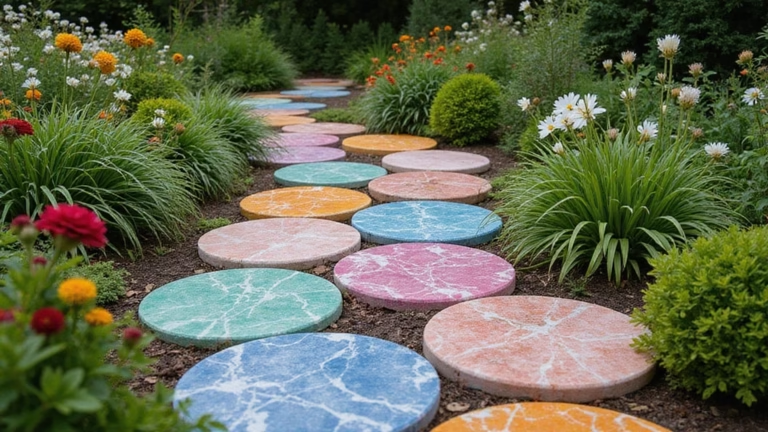Turning your garden into an eco-friendly oasis is easier than you might think. With the power of DIY rainwater irrigation systems, you can harness nature’s gift to nourish your plants while giving a big thumbs-up to Mother Earth.
Imagine the satisfaction of collecting rainwater and using it to hydrate your flowers, vegetables, and herbs. Not only does this save you money, but it also reduces your water footprint. In this guide, we’ll explore various creative and practical ways to design your own rainwater irrigation systems that are perfect for enhancing your garden decor. Let’s dive into this green adventure!
Classic Rain Barrel Setup: A Timeless Choice

One of the simplest and most effective ways to collect rainwater is through a classic rain barrel setup. This age-old method involves placing a barrel beneath your downspout to catch rainwater runoff from your roof.
To make this system work for you, start by selecting a sturdy barrel made of food-grade plastic or resin. You can personalize it with paint or decoration to complement your garden decor. Here are some tips to consider:
– Ensure the barrel is at least 50 gallons to store sufficient water.
– Use a screen on top to keep debris and mosquitoes away.
– Connect a simple spigot at the bottom for easy access to the water.
– Position your barrel at a slight angle to help with drainage.
This method is not only economical but also gives your garden a rustic charm while providing a continuous water source.
The DIY Drip Irrigation System: Precision Watering for Less

For gardeners looking to optimize their watering process, a DIY drip irrigation system is a game-changer. This method allows water to drip slowly to the roots of your plants, ensuring they receive moisture without wasting a drop.
Start by gathering supplies like PVC pipes, connectors, and drip emitters. Here’s how to set it up:
– Lay out the PVC pipes according to your garden layout.
– Drill small holes where you want the drip emitters to be positioned, ideally near the base of each plant.
– Connect the pipes to your rain barrel or a rainwater harvesting system.
– Test your system by running water through it and adjust the emitters as needed.
Not only does this method save water, but it also encourages deep root growth, resulting in healthier plants. Plus, it’s a fantastic way to showcase your DIY skills in your garden decor.
Rainwater Planters: A Chic and Functional Approach

If you’re short on space, rainwater planters can be a stylish and effective solution. These self-watering planters use collected rainwater to nourish your plants, all while doubling as a decorative element in your garden or patio.
To create a rainwater planter, you’ll need a container, a reservoir, and a wicking system. Follow these steps:
– Choose a watertight container that suits your style; it can be anything from a decorative pot to an old barrel.
– Install a false bottom or a reservoir at the base to hold collected rainwater.
– Use a fabric wick that reaches from the reservoir to the soil, allowing moisture to travel up as needed.
– Plant your favorite flowers or herbs for an eye-catching display.
This clever design not only adds a touch of elegance to your space but also showcases your commitment to eco-friendly gardening practices.
The Gutter Garden: Utilizing Roof Runoff

Transform your gutters into a gardening asset with a gutter garden! This innovative method allows you to cultivate plants in a vertical arrangement while using collected rainwater effectively. It’s perfect for those with limited space or looking to add unique decor to their outdoor area.
To create a gutter garden, you’ll need:
– Old gutters (new ones work too!)
– Mounting brackets for installation
– Potting soil and your choice of plants, like herbs or trailing flowers.
Start by mounting the gutters to a wall or fence, ensuring they are angled slightly for proper drainage. Fill them with potting soil and plant your selections.
The rainwater runs through the gutters and nourishes your plants, making it an efficient use of space and resources. Plus, it adds an artistic flair to your garden decor!
Rain Chains: Beautifying Water Flow

Rain chains are a visually stunning alternative to traditional downspouts. They guide rainwater from your roof while adding a decorative touch to your garden. Made from various materials like copper, aluminum, or even ceramic, these chains can transform the mundane into the spectacular.
To install a rain chain, here’s what you need to do:
– Replace your regular downspout with a rain chain. You can purchase one or even make your own using buckets or cups.
– Anchor the chain with a basin at the bottom to catch the water.
– Position it strategically in your garden so it enhances your decor while providing moisture to thirsty plants below.
With a gentle tinkling as the water flows, rain chains not only serve a functional purpose, but they also create a serene ambiance in your outdoor space.
Rainwater Cistern: A Big Solution for Big Gardens

If you’re serious about eco-friendly gardening, installing a rainwater cistern could be your best bet. These large storage tanks can hold thousands of gallons of rainwater, providing ample supply for even the most extensive gardens.
Here’s the rundown on setting up a rainwater cistern:
– Choose an appropriate location with enough space and good drainage.
– Connect it to your gutter system to maximize collection.
– Filter incoming water to remove debris before it enters.
– Install a pump system to distribute water efficiently to your garden and plants.
Having a cistern means that you’re prepared for dry spells. It supports not only your plants but also allows you to demonstrate sustainable living practices in your home decor.
Decorative Water Features: Combining Aesthetics and Functionality

Imagine a serene water feature in your garden, bubbling with rainwater collected from your roof. Combining beauty with purpose, decorative water features can enhance the aesthetics of your outdoor space while utilizing rainwater.
To create a water feature:
– Select a fountain or pond that suits your style and space.
– Use a rainwater collection system to feed the water feature.
– Incorporate plants around or within the feature to create harmony with nature.
This setup not only provides a tranquil sound but also serves as a natural oasis for birds and butterflies. Plus, it’s a fantastic way to make use of rainwater while enriching your garden decor.
Compost and Rainwater: A Perfect Pairing

Did you know that rainwater can aid in your composting efforts? Keeping your compost pile moist is critical for its success, and rainwater is the perfect resource. By combining rainwater irrigation systems with composting, you’re maximizing sustainability in your garden.
Here’s how to do it:
– Set up your compost bin in a shaded area to help retain moisture.
– Use rainwater collected from your irrigation system to keep the pile damp.
– Turn the compost regularly and check for moisture levels.
The resulting compost will be rich in nutrients, perfect for nourishing your garden while reducing waste. What’s better than a zero-waste gardening approach?
Hydroponics and Rainwater: A Modern Twist

Combining modern technology with traditional gardening, hydroponics uses nutrient-rich water instead of soil to grow plants. When paired with a rainwater irrigation system, it offers an incredibly efficient way to garden.
To set up a rainwater-based hydroponic system:
– Choose your hydroponic setup (like deep water culture, nutrient film technique, etc.).
– Use rainwater filtered to remove impurities.
– Monitor pH and nutrient levels regularly.
This method is not only incredibly eco-friendly but also allows you to grow a variety of plants even in small spaces. Plus, it’s a real standout feature in any home decor.
Rain Gardens: A Beautiful Solution to Stormwater Management

Rain gardens serve a dual purpose: they beautify your outdoor space while managing stormwater runoff effectively. By utilizing native plants and a well-designed irrigation system, you can create a stunning garden that thrives on rainwater.
To create your rain garden:
– Choose a location to capture runoff from roofs or driveways.
– Select a range of native plants that can tolerate both wet and dry conditions.
– Design a shallow bowl shape to hold rainwater temporarily.
Not only do rain gardens add an artistic flair to your yard, but they also support local wildlife and improve the health of your gardening ecosystem. It’s a win-win for both aesthetics and functionality!
Plant Watering Gauge: Knowing Just When to Water

Monitoring your garden’s watering needs can be tricky, but a plant watering gauge can simplify this task. These handy devices measure the moisture level in your soil, helping you determine the perfect time to use your rainwater irrigation system.
You can easily make your own with simple materials:
– Use a long, tapered stick or dowel.
– Paint it or mark it to indicate moisture levels (dry, moist, wet).
– Insert it into the ground near your plants.
With this tool, you won’t have to guess when to water. Keeping your plants hydrated promotes healthy growth, and it’s a fun addition to your garden decor.
Vertical Gardens with Rainwater Irrigation Systems

Vertical gardening is a fantastic way to maximize space, especially in urban settings. By combining rainwater irrigation systems with vertical gardens, not only are you saving space but also creating a unique visual display.
To create a vertical garden:
– Use wall-mounted planters or repurposed wooden pallets.
– Install a rainwater collection system to feed water to your vertical setup.
– Choose plants that thrive in vertical arrangements, such as succulents or trailing vines.
The striking visuals of a vertical garden are sure to impress guests while demonstrating your commitment to eco-friendly practices. It’s a conversation starter that showcases how beautiful sustainability can be.
Rainwater Irrigation for Potted Plants: Easy and Efficient

Potted plants can be a challenge to keep hydrated, especially during hot weather. Integrating a rainwater irrigation system can make caring for your potted favorites a breeze.
Here’s a simple approach to using rainwater for your pots:
– Use a large barrel or container to collect rainwater.
– Place a watering can or self-watering system that draws from the barrel.
– Ensure pots have drainage holes to prevent waterlogging.
This not only simplifies your watering routine but also enhances the aesthetics of your patio or balcony. Keeping your plants happy while showcasing your creativity in home decor is always a winning combination.
Final Thoughts: Embrace Eco-Friendly Gardening

Adopting rainwater irrigation systems in your gardening routine is a rewarding journey that wraps sustainability and beauty into one package. Whether you choose a classic rain barrel, a drip irrigation system, or a creative gutter garden, there’s a method that fits your style and needs.
Embrace the eco-friendly practices that not only benefit our planet but also enhance your home decor. Each small step leads to a larger impact, and when combined, they create a thriving and beautiful garden. Let’s cultivate not just plants, but also a greener future together.








